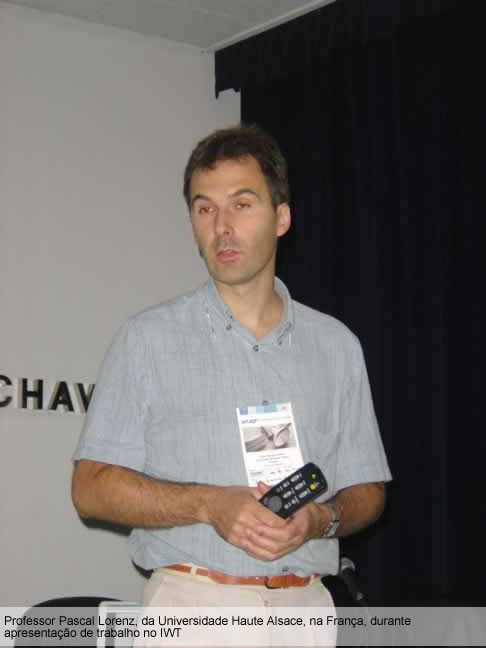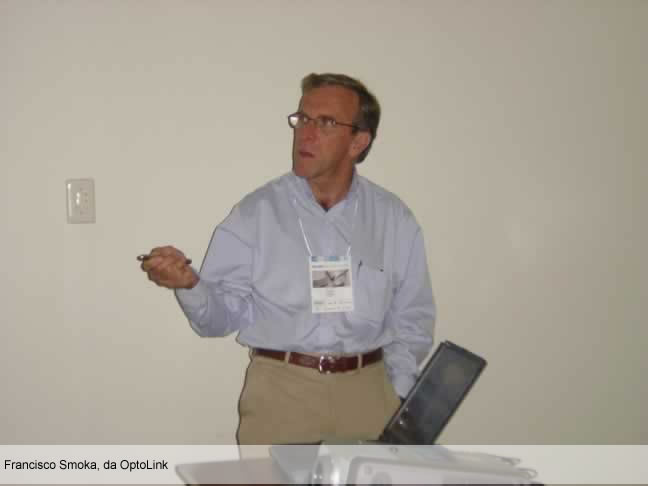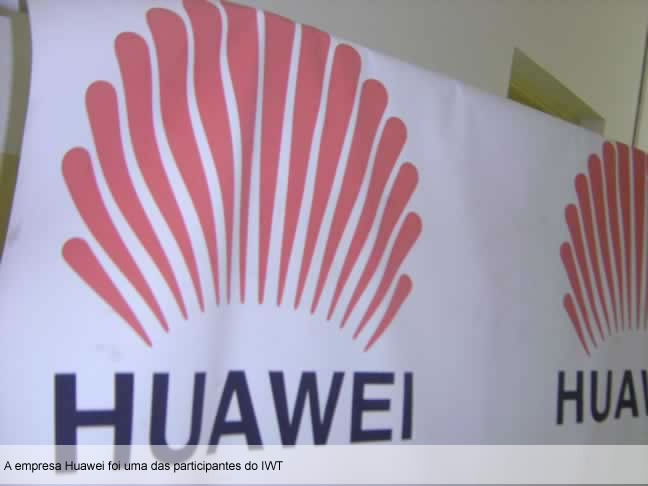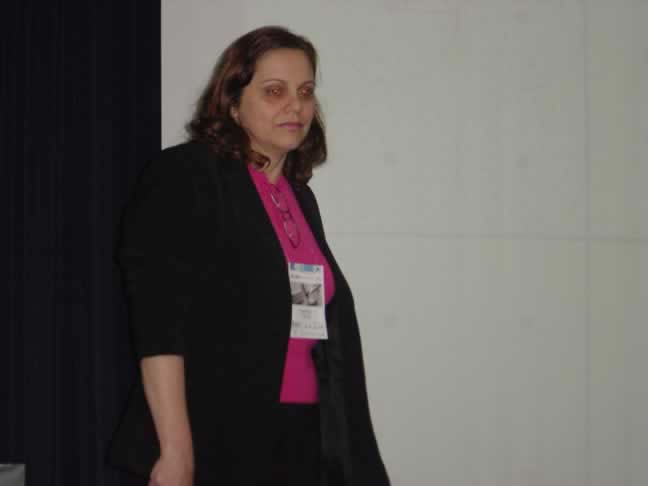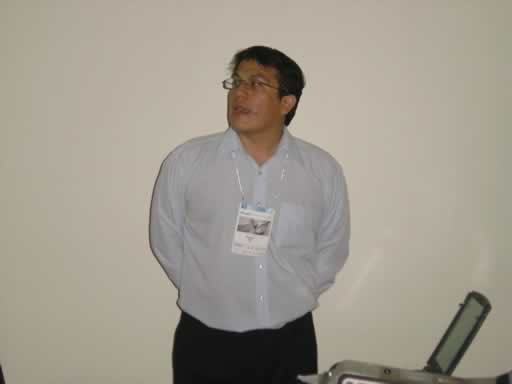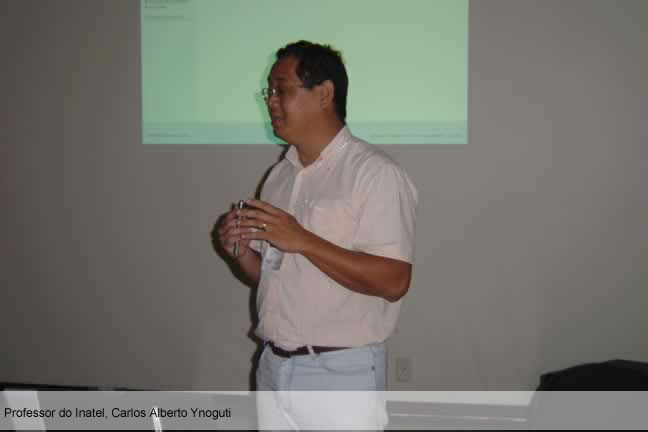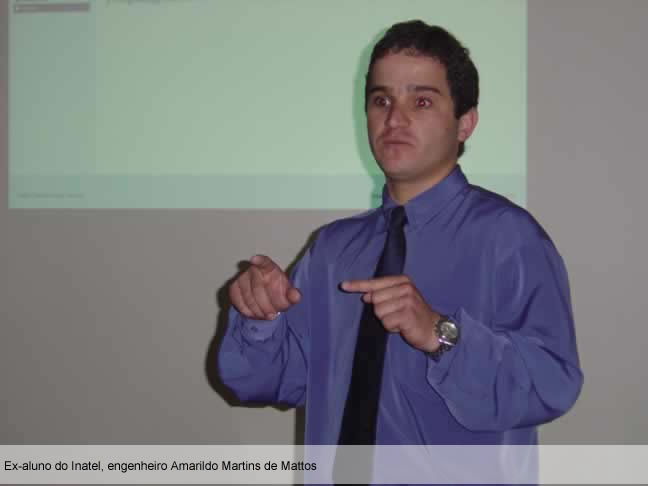IWT 2015
Resume
The first Optoelectronics Week - SEMOPTO, in 1991, had as main purpose to provide researches, students and professionals involved in this technology an opportunity to exchange information. Since then, companies - such as CPqD/Telebrás, Telemig (Telemar), ABC-XTAL, CTBC (Grupo Algar), Fotônica, AsGa, Microeletrônica, AGC Optosystem, Shachin Cury, Lucent Technologies, Leucotron and institutions like CTA-ITA, Unicamp, Unesp, CETUC-RJ, CEFET-PR, UFMG and EFEI (Unifei) - have been participating of the event.
In 1998, the SEMOPTO became an international biennial event. Lecturers from Germany, Chile, Canada, Italy and France, as well as Brazilian specialists, joined it.
In 2000, the event was entitled "Telecommunications International Week" and gave national and international experts a unique chance to discuss the most recent issues from the telecommunications area.
In 2004, the conference was named "IWT - International Workshop on Telecommunications". Important keynote speakers, such as Prof. Dr. Pascal Lorenz, Ethevaldo Siqueira and Prof. Dr. Antônio Alfredo F. Loureiro, participated of the event at Inatel. Several papers and tutorials were presented in 10 different technical areas. IWT'2004 offered a business center where participants could show their products and services, besides tourist and cultural activities in the south of the State of Minas Gerais.
The 2nd edition of the IWT happened in 2007 and turned out to be a forum to exchange new ideas and information. 54 technical papers, authored by researchers from 6 different countries, were presented in 9 technical areas. These papers were chosen between 109 papers submitted from 9 different countries by 55 reviewers who took part in a committee of evaluation. In addition, 4 tutorials and 3 talks were presented by distinguished scientists, covering the hot topics in the telecommunications area at that time.
In its 3rd edition, in 2009, the workshop was held at Ericsson's headquarters in São Paulo. 56 technical papers, written by researchers from Canada, Dubai, Australia, USA, France, Italy, Germany and Brazil, covered the main subjects of the telecommunications world. The keynote speakers were Dr. Pascal Lorenz, from the University of Haute-Alsace/France, Dr. Roberto Saracco, director of Future Centre/Telecom Italy and Dr. Otto Strobel, from the Esslingen University of Applied Sciences (FHTE)/Germany. The Technical Program Committee counted on the participation of professors from the School of Electrical and Computer Engineering from Unicamp to organize the event. The IWT'09 was organized by Inatel in partnership with SBrT, IEEE-MG and Ericsson. CNPq and companies like Linear, Ativa and Sense cosponsored the event.
The edition of the IWT in 2011 happened at Vivo in Rio de Janeiro. A total of 64 papers were presented by authors from Brazil, Germany, Australia, Canada, Turkey, Peru, France, Sweden, Saudi Arabia and Hungary. During the 3 days of the event, the latest topics in the communications area were presented and discussed among the participants. The keynote speakers were Professor Dr. Shu Lin from University of California at Davis - USA, Dr.Hiroaki Harai, from NICT and Akari Project - Japan and Professor Dr. Max Henrique Machado Costa, from University of Campinas (Unicamp) - Brazil. The event had two tutorials. One of them were about Communication in Transportation Systems and were presented by Dr. Otto Strobel, from the Esslingen University of Applied Sciences (FHTE)/Germany. The other tutorial were about Future Internet and were presented by three professors (Professor Dr. Antônio Marcos Alberti, from Inatel - Brazil, Researcher Tânia Regina Tronco, from CPqD - Brazil and Researcher Christian Esteve Rothenberg, also from CPqd - Brazil. The event also had a session presented by BIC Group (Building International Cooperation for Trustworthy ICT), from Europe. The IWT'11 was organized by Inatel in partnership with SBrT, IEEE-MG and Vivo. Companies like Linear, Ativa and Sense cosponsored the event.
In 2013 the event was brought back to the headquarters of Inatel, in Santa Rita do Sapucaí, in the South of Minas Gerais. In the 5th edition of the IWT, researchers from Brazil, Italy, Israel, India, Colombia, Peru, and Ecuador presented 46 papers. The novelty, on that occasion, was the introduction of plenary sessions on researches carried out at Inatel. In those sessions the coordinators of the studies invited foreign researchers to discuss Spectral Sensing, Optical Communications and Cognitive Radio. The highlights were the participations of Dr. Antonella Bogoni, research leader at the Integrated Research Center for Photonic Networks and Technologies in Italy, professor Dr. Apurva N. Mody, Chairman of the IEEE 802.22 Working Group (WG) in the USA, and Dr. Boaz Nadler, member of the Weizmann Institute of Science, in Israel, as keynote speakers.
IWT 2013
Speakers
-
Dr. Antonella Bogoni
Brief Biography:
Antonella Bogoni was born in Mantova, Italy. She received the M.S. Degree in electronics engineering in 1997 and the Ph.D. degree in 2004 from University of Parma, Italy. From 1998 to 1999 she was grantee of Marconi S.p.a. at the University of Parma. From 2000 to 2006 she was researcher of CNIT (Consorzio Nazionale Interuniversitario per le Telecomunicazioni) at the Parma University up to 2001 and then at Photonic Networks National Laboratory in Pisa, Italy.From 2006 to 2010 she is head of research at the Integrated Research Center for Photonic Networks and Technologies. Currently she is head of research area in the same center. From 2006 she is CEO of PhoTrix. In 2008 and 2010 she was visitor at USC, California. In 2009 she received the European Research Council Starting Grant. In 2010 she is awarded by the Fulbright advanced research scholarship. She has been Scientific Coordinator for National and International projects and involved in several international, EU and national projects. She is co-author of 7 chapters and books, more than 80 papers on international journals, 200 contributes for international conferences and 45 international patents. She presented more than 30 invited contributions at international conference and on international journal. She is Program co-chiar of OSA Photonics in Switching 2013 conference. She participated to revision committees of international conferences and she is reviewer for international journals and for the European Commission within FP7 and for FNRS (Fond de la rechearche scientifique) and Thalis and Archimedes platforms . Her research interests are in the area of fiber optical transmissions, especially in ultra-fast all-optical signal processing and pulsed source generation, and in the microwave area especially in radar and wireless communication systems based on photonics.
Speech Theme: Photonics for new generation fully-digital radar and wireless communication systems: from the photonic-based RF signal generation to the optical RF sampling
Speech Description: The speech will introduce the role of photonics for new generation radar and wireless communication systems. Modern techniques for the photonic-assisted RF generation will be detailed to provide extremely stable multicarrier signals up to the millimeter wave band, with an arbitrary amplitude and phase modulation and phase noise independent on the frequency.
At the receiver photonic technologies will be reported for the optical sampling directly at RF and for the down-conversion of multiple heterogeneous RF signals, allowing an increased resolution. The innovative transceiver features guaranteed by the use of photonics, will be demonstrated for the development of new generation fully digital multiband single and array radar systems working at high frequency (X band and beyond), and for the design of radically new multi-protocol software-defined wideband wireless communication apparatus.
Finally new applications for safety, traffic and environment control and for new mobile broadband services enabled by the photonic-based radar and wireless communication systems respectively will be summarized.
-
Dr. Apurva N. Mody
Brief Biography:
Dr. Apurva N. Mody (apurva.mody@ieee.org) is the Chairman of IEEE 802.22 Working Group (WG) on Wireless Regional Area Networks (WRANs) (www.ieee802.org/22). He is also the Chairman of the Whitespace Alliance (www.WhiteSpaceAlliance.org). The IEEE 802.22 Wi-FARTM/ Super Wi-Fi Standards will support Cognitive Radio (CR) based use of the TV Band WhiteSpaces to enable regional and rural broadband wireless access serving more than 3.5 Billion people. Other Machine to Machine applications will drive the volumes. Under Dr. Mody' s leadership, the IEEE 802.22 WG is the recipient of the IEEE SA Emerging Technology Award. Dr. Mody received his Ph. D. in Electrical Engineering from Georgia Institute of Technology. His research was based on Receiver Implementation for Multiple Input Multiple Output Orthogonal Frequency Division Multiplexing Systems. Dr. Mody was granted five patents through his Ph. D. research which were later sold to Intellectual Ventures. Since June 2005, he has been also performing research on Cognitive Radio systems. Dr. Mody has contributed to the field of Machine Learning based Cognitive Communications in White as well as Gray Spaces, feature based spectrum sensing, signal classification, co-existence techniques, security for CR based systems, information fusion, game theoretical decision making, policy based management etc. Dr. Mody has played a pivotal role in growing the expertise and market share for his company on CR, Dynamic Spectrum Access (DSA) related programs. Dr. Mody has been a key contributor on many programs and invited speaker at many Government and commercial events. Dr. Mody has published more than 50 conference and journal publications and is an author of more than 15 US and international patents.
Dr. Mody is the Senior Member of the IEEE, President' s Fellow while at Georgia Tech, Member of Tau Beta Pi and Eta Kappa Nu Honor Societies.
Speech Theme: From WhiteSpace Enabled Rural Broadband to Cognitive M2M
Speech Description: Regulators all over the world have realized the importance of WhiteSpaces. WhiteSpaces are the un-used or under-utilized portions of the spectrum. There is an on-going debate on licensed vs license-exempt use of this spectrum. Currently 73% of the people in the world do not have internet access. Nearly 3.5 Billion people live in rural areas with hardly any internet availability. License-exempt use of WhiteSpaces enabled through Cognitive Radio (CR) technology has the potential to change all that and benefit many emerging economies such as Brazil. Other Machine to Machine (M2M) applications will drive up the volumes. WhiteSpace spectrum can support a wide variety of applications including regional and rural area broadband access, local area networks, hot-spots, health-care applications, cellular off-load, smart utility networks, remote control and monitoring applications, home-land security, disaster-recovery etc. Skeptics exist but recently, CR related research has seen an explosive growth all over the world, and software radio defined test-beds and prototypes are being tested and deployed in many parts of the world already. The first part of the presentation will describe ideas and results on machine learning based cognitive communications in White as well as the Gray space. The second part of the talk will focus on IEEE 802.22 Standards and WhiteSpace Alliance activities to promote this eco-system and other standards such as 3GPP / LTE, IEEE 802.19.a, IEEE P1900, IETF etc.
Further Information on WhiteSpace Alliance: The mission of the Whitespace Alliance (www.WhiteSpaceAlliance.org) is to promote the development, deployment and use of standards based products and services as a means of providing broadband capabilities via TV band and other emerging WhiteSpaces. By promoting the use of standards, the Alliance will enable companies to provide broadband connectivity at reasonable cost. The WSA will also act as an enabler of the emerging white spaces ecosystem through educational activities and helping to put in place interoperability, conformance, and compliance testing to make sure that our member stakeholders get the needed information & collaborations to succeed both in the market place and with regulatory requirements. WhiteSpace Alliance will promote the use of IEEE, 3GPP and IETF Standards for use in the WhiteSpaces.
Further Information on the IEEE 802.22 Standard: IEEE 802.22 systems will provide broadband access to wide regional areas around the world and bring reliable and secure high-speed communications to under-served and un-served rural communities, which are estimated to include nearly half of the worlds population. The IEEE 802.22-2011 is the first IEEE 802 Standard for operation in the Television (TV) Whitespaces, defined as the available or un-occupied TV channels. It is also the first IEEE Standard that focuses on broadband connectivity in rural areas where most vacant TV channels can be found, thus helping to bridge the digital divide. IEEE 802.22 Working Group is the recipient of the IEEE SA Emerging Technology Award. This new standard for Wireless Regional Area Networks (WRANs) takes advantage of the favorable transmission characteristics of the VHF and UHF TV bands to provide broadband wireless access over a large area up to 100 km from the transmitter. Each WRAN could deliver 22 Mbps to 29 Mbps, depending upon the country of deployment, without interfering with reception of existing TV broadcast stations. IEEE 802.22 incorporates advanced cognitive radio capabilities including dynamic spectrum access, incumbent database access, accurate geo-location techniques, spectrum sensing, regulatory domain dependent policies, spectrum etiquette, and self-coexistence for optimal use of the available spectrum. The new IEEE P802.22b amendment proposes to support enhanced broadband and monitoring applications.
-
Prof. Boaz Nadler
Brief Biography:
Boaz Nadler was awarded a Ph.D. in applied mathematics from Tel-Aviv University. After 3 years at Yale University, he joined the Weizmann Institute of Science where he is currently a faculty member.
Dr. Nadler research interests include mathematical statistics, statistical machine learning and applications to image and signal processing.
Speech Theme: Detection of Signals in Noise, Spectrum Sensing and Random Matrix Theory
Speech Description: Detection of signals in noise from multivariate observations is a fundamental problem in many different fields, including in particular, spectrum sensing applications. In this talk I'll review several such problems and their connections to various classical multivariate statistical problems, including principal component analysis and MANOVA. I'll then show how these can be studied by a combination of matrix perturbation and random matrix theory.
IWT 2011
Resume
The International Workshop on Telecommunications (IWT) is a biennial event sponsored by Instituto Nacional de Telecomunicações (Inatel), Brazil. The IWT'11 will be held in Rio de Janeiro, Brazil, from 3rd to 6th of May, 2011.
Its main goal is to promote and discuss the latest innovations in the telecommunications area. It will be a great opportunity for all the professionals and researchers to share ideas and learn more about the new developments and researches.
Besides its social program, the workshop will offer tutorials, plenary sessions and keynote sessions presented by internationally recognized experts, featuring a technical program with researchers from academia and engineers from industry, network operators and service providers.Authors are invited to submit extended abstracts describing original works in telecommunications area for the technical papers to be presented at the workshop.
Hope to meet you in the IWT'11 in Rio de Janeiro, Brazil!
Prof. Dr. Carlos Alberto Ynoguti
General Chairman
IWT 2009
Resume
IWT - International Workshop on Telecommunications The International Workshop on Telecommunications (IWT) is a biennial event sponsored by Instituto Nacional de Telecomunicações (Inatel), Brazil. The IWT'09 will be held at Ericsson in São Paulo, Brazil, from 16 to 19 of February, 2009.
Its main goal is to promote and discuss the latest innovations in the telecommunications area. It will be a great opportunity for all the professionals and researchers to share ideas and learn more about the new developments and researches.
Besides its social program, the workshop will offer tutorials, plenary sessions and keynote sessions presented by internationally recognized experts, featuring a technical program with researchers from academia and engineers from industry, network operators and service providers.
Authors are invited to submit extended abstracts describing original works in telecommunications area for the technical papers to be presented at the workshop.
Hope to meet you in the IWT'09 in São Paulo, Brazil!
Prof. Dr. Carlos Alberto Ynoguti
General Chairman
Objective
The aim of the International Workshop on Telecommunications is to discuss the continuous and fast advances in several areas of communications systems and networks. The IWT'15 organizing committee invites you to submit original papers addressing research topics of interest for presentation at the workshop and inclusion in the workshop proceedings. A summary of the main topics of IWT'15 is presented below.
Accepted and presented papers will be published in the conference proceedings and submitted to IEEE Xplore as well as other Abstracting and Indexing (A&I) databases.
- Communication Theory
- Signal Processing
- Wireless Communications
- Wireless Networks
- Optical Networks
- Next Generation Networks
- Cognitive Radio
- Cognitive Networks
- Spectrum Sensing
- Radio over Fiber
- Smart Grid
- Performance Modeling and Evaluation
- Adhoc, Sensor and Mesh Networks
- Communication Software and Services
- Computer and Communications Networks
- Cybersecurity
- Future Networks Design
- MIMO Systems
- Multicarrier Systems
- Medical communications
- Mobile Health
- Digital Communication
- Cooperative Coding / Network Coding
- E-Health
- Power Line Communications
- Networks Operations & Management
- Other Areas in Communications
Keynotes
Mr. Bruno Ramos
Mr. Ramos was appointed Regional Director for the Americas Regiional Office in April 2013. He is graduated in Electrical Engineering from the Escola Politécnica da Universidade de São Paulo (USP), he is an expert in Telecommunications Regulation at the University of Brasilia (UnB). Mr. Ramos’ entire career has been concentrated in the telecommunications industry. He worked in the capacity of Senior Engineer at TELESP, and most recently as Superintendent of Data, Mobile & Satellite Communication is the Brazilian Telecommunications Agency – Anatel. In addition to this, he was Vice-Chairman for ITU-T Study Groups from 2000 – 2013, as well as Head of Delegation for WCIT-2012 in Dubai.
Presentation: The new technologies in the global scenario and its impact in today’s knowledge society: an ITU perspective.
Abstract: ITU, the United Nations specialized agency for ICTs and telecommunications, is committed to playing a leading role in the development of the digital economy through extending the benefits of advances in technologies and embracing the opportunities it unleashes. The three ITU sectors – Radiocommunication, Standardization and Development – are working together to meet these challenges and the collective success will be a key factor in ensuring the provision of equitable opportunities access to the technology throughout the world. This session is dedicated to providing an overview of ITU, its role and mandate as a Specialized Agency of United Nations and its core activities undertaken in the fields of Radiocommunication, Standardization and Development of ICTs. The reviewing of ITU activities will consider among others the 150 Anniversary of ITU, Regional Initiatives for the Americas and World Radiocommunication Conference. Emphasizing how new technologies are part of the global scenario and its impact in today’s knowledge society, such as the Internet of things and 5G networks.
Prof. Zhi (Gerry) Tian
Dr. Zhi (Gerry) Tian is a Professor in the Electrical and Computer Engineering Department of George Mason University, Fairfax, VA, as of January 2015. Prior to that, she was on the faculty of Michigan Technological University from 2000 to 2014. She served as a Program Director in the Division of Electrical, Communications and Cyber Systems at the US National Science Foundation from 2012 to 2014. Her research interests lie in wireless communications, wireless sensor networks and statistical signal processing. She is an IEEE Fellow. She is an elected member of the IEEE Signal Processing for Communications and Networking Technical Committee (SPCOM‐TC) and a member of the Big Data Special Interest Group IEEE Signal Processing Society. She served as Associate Editor for IEEE Transactions on Wireless Communications and IEEE Transactions on Signal Processing.
Presentation: Compressive Wideband Spectrum Sensing for Wireless Cognitive Radios
Abstract: Compressive sensing is one of the recent eminent advances in signal processing and statistical learning, with impact to various applications including data sciences, communications, sensor networks, bioinformatics, and medical imaging. It requires information-bearing signals to be sparse over known domains, either naturally or by design. In this talk, I will introduce the fresh notion of compressive covariance sensing, and advocate its exciting implications for (cyclo) stationary processes characterized by second-order statistical descriptors. Such descriptors include (periodic) covariances or frequency, cyclic, angular and Doppler spectra, which already effect signal compression even in the absence of sparsity. Using this key observation, we will demonstrate how the attribute of sparsity can be leveraged more effectively, or, even bypassed when recovering the second-order statistical information of interest. As a leitmotif, we will use the task of wideband spectrum sensing for wireless cognitive radio, which is instrumental for realizing the goal of enhancing access to the radio spectrum. We will present a cyclic feature based compressive spectrum sensing approach for wideband cognitive radios. Using the new framework of compressive covariance sensing, wideband weak signals can be sensed reliably from sub-Nyquist-rate samples in the presence of noise uncertainty, even for (non-sparse) crowded spectrum.
Prof. PhD. Sarah Kate Wilson
Sarah Kate Wilson received her A.B. from Bryn Mawr College with honors in Mathematics in 1979 and her Ph.D. from Stanford University in Electrical Engineering in 1994. She has worked in both industry and academia and has been a visiting professor at Lulea University of Technology, the Royal Institute of Technology in Stockholm and Stanford University. She is an associate professor at Santa Clara University. She has served as an associate editor for IEEE Transactions on Wireless Communications, IEEE Communications Letters and IEEE Transactions on Communications and the editor-in-chief of IEEE Communications Letters. She is a Fellow of the IEEE and the Vice President for Publications of the IEEE Communications Society.
Presentation: Tripping the Light Fantastic: Optical Wireless Communications.
Abstract: For the past fifteen years, wireless local area networks have operated successfully in the 2.4 GHz band and the 5 GHz bands. Signals from these bands do not confine themselves to a given room or even household, so security and frequency re-use are issues for concern. Alternative frequencies such as 60 GHz or optical wireless links are currently being investigated as alternatives to these leaky lower bands. Optical wireless transmission will use available room light to send information. This future technology will allow existing light to do double-duty as information-bearing signals. This talk will focus on the benefits and challenges of optical wireless communications.
Prof. Lisandro Granville
Lisandro Zambenedetti Granville is associate professor at the Institute of Informatics (INF) of the Federal University of Rio Grande do Sul, (UFRGS). He holds a master (1998) and Ph.D. (2001) degrees in Computer Science, on the field of Computer Networks. He is director of the Research and Development Center of Digital Technologies for Information and Communication (CTIC), chair of the IEEE Committee on Network Operations and Management (CNOM), co-chair of the Network Management Research Group (NMRG) of the Internet Research Task Force (IRTF), vice-president of the Brazilian Computer Society (SBC), member of the Brazilian Internet Steering Committee (CGI.br) and CNPq researcher.
Presentation: Management of SDN- and NFV-based Computer Networks.
Abstract: The paradigms of Software-Defined Networking (SDN) and Network Functions Virtualization (NFV) have revolutionized the computer network industry. The widely recognized benefits achieved by employing SDN and NFV include the easy introduction of new functions in the network (i.e. Firewalls and NAT), independency of device vendors, and lower cost of deployment and maintenance. However, as in every new technology, novel management functionalities, previously absent, are now required. In the case of SDN and NFV, the some management challenges include: mapping of virtual machines into physical hardware, determining the network path which the flows of interest have been through, the load balance and number of instances in critical servers. Often, the management aspects are neglected in the design of new networking technologies. NFV and SDN are not exceptions. In this presentation, SDN and NFV will be reviewed, while the main managements requirements will be identified. Also, the main contributions from academia and industry that address these requirements will be discussed. In this process, the open issues and challenges will be mapped, opening new opportunities for research and development in industry and academia alike.
Prof. PhD. Chengshan Xiao
Director of Conference Publication of IEEE Communications Society (ComSoc), an Elected Member of IEEE ComSoc Board of Governors, a Member of IEEE ComSoc Fellow Evaluation Committee, and a Distinguished Lecturer of the IEEE Vehicular Technology Society.
Presentation: Optimal linear precoding for finite alphabet signaling in wireless systems and networks.
Finite alphabet signaling refers to commonly used discrete-constellation modulations in practical communication systems, such as PAM, PSK or QAM. In this talk, we will target at how to increase data rate or throughput via linear precoding in wireless systems and networks such as multiple-input multiple-output (MIMO) systems, multiple access channels, broadcast channels, wiretap channels, and cognitive radio networks. We will present backgrounds, theoretical results, hardware implementation, and experimental results for maximizing the mutual information-based achievable data rate or throughput. Our results demonstrate that precoding for finite alphabet signaling can be radically different from the precoding (or power allocation) for Gaussian signaling. Our examples show that the finite-alphabet signaling-based approach provides not only higher achievable data rate but also lower coded bit error rate than the approaches that design the precoder with Gaussian input assumption. Further research topics will be discussed in this talk as well.
Accepted and presented papers will be published in the conference proceedings and submitted to IEEE Xplore as well as other Abstracting and Indexing (A&I) databases.
Future Internet
Instructor: Antônio Marcos Alberti
Abstract: Worldwide, dozens of initiatives are focused on redesigning the Internet under the banner of the so-called Future Internet research. However, many questions still remain open. For instance, what does it means a Future Internet? What is its scope? What is its role on the future society? What are the requirements to be met? What are the key designed ingredients? Are there technological synergies that can be exploited? In this tutorial, we will provide a panorama of how the current research is addressing such questions. Also, we will present a brief overview of the ongoing research on the Future Internet, including the one that is being done at Inatel, Brazil.
Instructor CV:
Antonio Marcos Alberti received the degree in Electrical Engineering from Santa Maria Federal University (UFSM), Santa Maria, RS, Brazil, in 1986, and the M.Sc. and Ph.D. degrees in Electrical Engineering from Campinas State University (Unicamp), Campinas, SP, Brazil, in 1998 and 2003, respectively. In February 2004 he joined the Instituto Nacional de Telecomunicações (INATEL), as an Adjunct Professor. He has experience in teaching more than 8 post-graduation disciplines, including Analysis and Performance Evaluation of Communication Networks, Optimization Methods Applied to Telecommunications and Convergent Networks. He is a member of the editorial board of the INATEL telecommunications magazine. He was member of the technical committee of Globecom, TEMU, ICDT and ANSS conferences. In 2010, wrote a book chapter entitled "Future Network Architectures: Technological Challenges and Trends" that discusses technological requirements, challenges and trends towards future network architectures. His main working area is communication networks, where he has expertise in project, modeling, simulation, performance evaluation and optimization of such networks. His current interests include future networks design, cognitive and autonomic networks, indirection resolution, entities identification, virtualization and future enabling technologies.
AcceptedPapers
-
Number: 2
Paper Title: A Novel Design of Robust Video Steganographic System
Author(s): Waleed Farag -
Number: 3
Paper Title: RF Optical Link for Remote Station Applications
Author(s): Euclides Chaves Pimenta Júnior and Gefeson Mendes Pacheco -
Number: 4
Paper Title: On the Improvement of the Learning Rate in Blind Source Separation Using Techniques from Neural Network Theory
Author(s): Felipe A. P. de Figueiredo and Carlos Alberto Ynoguti -
Number: 6
Paper Title: Influence of Background Traffic on Delay Centric Path Selection Algorithm for Multihomed SCTP
Author(s): Igor Gavriloff and Eduardo Parente Ribeiro -
Number: 8
Paper Title: Power Control on Cognitive Radio Manet Using Smart Antennas
Author(s): Mathieu Boutin, Sofiene Affes and Charles Despins -
Number: 9
Paper Title: On Performance of WH-STC-OFDM and WH-SFC-OFDMA in Non-Linear Time Variant Channels
Author(s): Luciano Leonel Mendes and Renato Baldini Filho -
Number: 14
Paper Title: QVoIP – A Tool to Evaluate the Quality of VoIP Calls Using E-model
Author(s): Fábio Pessoa Nunes, Fabio Sakuray et. al. -
Number: 16
Paper Title: QoS Analysis of Packet Scheduling Algorithms for HSDPA Mobile Networks
Author(s): Kire Jakimoski and Toni Janevski -
Number: 17
Paper Title: Quality of Service in a PLC Network
Author(s): U. R. C. Vitor, E. M. L. D’Amorim et. al. -
Number: 19
Paper Title: Performance Evaluation of Adaptive Routing and Survivability in Dynamic Grooming WDM Networks
Author(s): Paulo R. L. Júnior, Edmar Candeia Gurjão and Marcelo S. Alencar -
Number: 20
Paper Title: Trends on Microwave Photonic Filters Based on Polarization Maintaining Fiber Delay Lines
Author(s): Carla S. Martins e outros -
Number: 21
Paper Title: Modeling and Analysis of Multicast and Unicast IPTV Traffic
Author(s): Toni Janevski and Zoran Vanevski -
Number: 22
Paper Title: A Robustness and Performance Comparison Between Cyclic Prefixed Single-Carrier and OFDM Systems
Author(s): Amanda Souza de Paula and Cristiano Magalhães Panazio -
Number: 24
Paper Title: A Study of Handover for Television Broadcasting in Brazil
Author(s): Késia Cristiane dos Santos and Marcelo Sampaio de Alencar -
Number: 25
Paper Title: Video Spatial Transcoding Assessment Based on Structural Distortion Measurement
Author(s): Carlos D. M. Regis et. al. -
Number: 27
Paper Title: Performance of QS-CDMA Ad Hoc Networks Using ZCZ Spreading Sequences
Author(s): Tarciana Araújo Lopes, Márzio Geandre Rêgo and Renato Baldini Filho -
Number: 28
Paper Title: Design of Frequency Selective Surfaces with Koch Fractal Elements
Author(s): Rossana M. S. Cruz et. al. -
Number: 29
Paper Title: A Semi-blind Concurrent Algorithm with Scattered Pilot Tones for OFDM Equalization
Author(s): Estevan M. Lopes, Fabbryccio A. C. M. Cardoso, Sandro Adriano Fasolo and Dalton S. Arantes -
Number: 32
Paper Title: A Fuzzy Approach to Provide QoS in IEEE 802.16 Networks
Author(s): M. M. O Silva, A. S. Garcia and E. P. Ferreira -
Number: 33
Paper Title: Performance Assessment of a Tactical Aircraft-to-ground Datalink
Author(s): Tiago M. Amaral, Tetsu Gunji and Marcelo S. Pinho -
Number: 34
Paper Title: Speech Synchronized Image-Based Facial Animation
Author(s): Paula D. P. Costa, José M. de Martino and Edson José Nagle -
Number: 35
Paper Title: Comparative Analysis of State-of-the-art Block-based Motion Estimation Techniques
Author(s): André Filgueiras de Araújo and Yuzo Iano -
Number: 36
Paper Title: Source and Channel Coding with Unequal Error Protection for Image Transmission in AWGN Channel
Author(s): R. B. Leite, Y. Iano, A. L. M. Cruz, F. S. Silva -
Number: 38
Paper Title: Combined Effect of Dispersion, Nonlinearities, and Group-Velocity Walk-off on the Propagation of Pulse Trains in Monomode Optical Fibers
Author(s): Paula Brandão Harboe, José Rodolfo Souza and David Santos Godoy -
Number: 39
Paper Title: A Pre-Rake CDMA System with Modified ZCD Spreading Code
Author(s): Incheol Jeong, Jaesang Cha and Mungeon Kyeong -
Number: 42
Paper Title: Hybrid Virtual Backbone Construction in Wireless Sensor Networks
Author(s): Chang Wook Lee, KwangJin Baek and PyeongSoo Mah -
Number: 43
Paper Title: Channel Estimation of Powerline Communication Systems
Author(s): Renata B. F. da Costa and Marco A. G. M. Maia -
Number: 44
Paper Title: Remarks on Using a Max-plus Model for TCP in a Wireless Network
Author(s): Rodrigo Andreola, Ricardo Luders and Keiko V. Fonseca -
Number: 45
Paper Title: Performance Analysis of Wireless Sensor Network Clustering Protocols Using Realistic Simulation Parameters
Author(s): Nauman Aslam and William Robertson -
Number: 46
Paper Title: Experimental Development of a New Technique to Measure Atmospheric Turbulence in Horizontal Optical Links Through Free Space
Author(s): Vinicius H. N. Silva, Andrés P. L. Barbero and Ricardo M. Ribeiro -
Number: 47
Paper Title: Galileo Boc(1,1) Signal Acquisition and Tracking
Author(s): Elvis Alves de Oliveira and Fernando Walter -
Number: 49
Paper Title: An Approach for Evaluating the Buffer Queueing Behavior of Multifractal Network Traffic Flows
Author(s): Leandro Bento Sena Marques and Shusaburo Motoyama -
Number: 50
Paper Title: The Forward Link Perfomance Study of the WiMAX System Under Different Schedulers -
Number: 51
Paper Title: VoIP Quality Improvement with a Rate-determination Algorithm
Author(s): Rui R. S. Júnior and Geraldo Gil R. Gomes -
Number: 52
Paper Title: OPNET Usage to Generate Simulations on Radio Networks
Author(s): Mark Cimini and John D. Johnson -
Number: 53
Paper Title: Switching Cell of Directional Coupling Embedded in Photonic Crystal Driven by External Command (for the C, U and L bands of ITU)
Author(s): A. Wirth L. Jr and A. S. B. Sombra -
Number: 54
Paper Title: Packet Latency Reduction in Optical Networks by Triggering SOA-Based Switches with Pre-Step Pulses
Author(s): Raniere N. Carvalho, Atílio E. Reggiani, Evandro Conforti and Aldário C. Bordonalli -
Number: 55
Paper Title: Secure IP Address Auto-Configuration Based on Zero-Knowledging
Author(s): Majid Taghiloo -
Number: 56
Paper Title: A Network Traffic Monitor Based on Python, Plone and RRDTool
Author(s): Antonio João Ferreira Francisco, Márcio Antonio Costa, Paulo Cesar Costa dos Santos and Jorge Futoshi Yamamoto -
Number: 57
Paper Title: Ultrashort Pulse Transmission from Bragg Fabry-Perot Filter
Author(s): J. L. S. Lima et alli -
Number: 58
Paper Title: Two Phases Solution for the Migration to NGN IMS Network
Author(s): Ali Amer -
Number: 60
Paper Title: Handover Strategy Considering Neighbors BS Availability for Multi Rate Air Interfaces
Author(s): O. C. Branquinho and A. A. Goes -
Number: 62
Paper Title: An Adaptive RLE Encoder to Compress Electrocardiograms
Author(s): Cristiano M. Agulhari, Ivanil S. Bonatti and Pedro L. D. Peres -
Number: 64
Paper Title: Performance Evaluation of Fundamental Frequency Estimation Algorithms
Author(s): Tiago F. Tavares, Jayme G. A. Barbedo and Amauri Lopes -
Number: 65
Paper Title: VoIP Quality Improvement with a Rate-determination Algorithm
Author(s): Demóstenes Z. Rodrigues and Miguel Arjona -
Number: 66
Paper Title: Accurate Time Transfer on a Wireless Telecommunications Link
Author(s): C. N. M. Marins et. al. -
Number: 67
Paper Title: Joint Channel Estimation and Frequency Synchronization in MIMO-OFDM Systems
Author(s): Phan Hong Phuong, Luu Thi Thuy and Hoang Pham Dang Huy -
Number: 68
Paper Title: Image Quality Evaluation Method Using Blocking Noise Measurement Algorithm
Author(s): Luís T. M. Raunheitte, Fujio Yamada et. al. -
Number: 69
Paper Title: Anycast Routing using Genetic Algorithm in Delay Tolerant Networks
Author(s): Ederson Rosa Silva and Paulo Roberto Guardieiro -
Number: 70
Paper Title: The Throughput Region of Wireless Random Access Protocols Assisted by Multipacket Reception
Author(s): Ramiro Samano-Robles and Atilio Gameiro -
Number: 73
Paper Title: Maximum Likelihood Estimation of Weak Optical Signals Parameters by Fixing each Photoelectron Emission Moment
Author(s): V. S. Sobolev and S. V. Khabarov -
Number: 74
Paper Title: Analysis of Dieletric-loaded Cylindrical Cavity Using Nonuniform One Dimensional Finite Element Method
Author(s): Salime Fazlali and Mahmoud Mohammad-Taheri -
Number: 75
Paper Title: Adaptive Interference Cancellation Antenna System
Author(s): Reuben Shar and Thales Australia -
Number: 78
Paper Title: Gossip-Quorum-AODV Based Fault Tolerant Ad-Hoc Networks
Author(s): Renata Lopes Rosa and José Roberto Amazonas -
Number: 79
Paper Title: An Adaptive Speaker Identification System for Noisy Speech
Author(s): Denis Pirttiabo Cardoso and Miguel Arjona Ramírez -
Number: 80
Paper Title: Cross-Layer Design for TCP Throughput Maximization with a Wireless end-point using Link Layer SW-ARQ
Author(s): Lucas Dias Palhão Mendes and José Marcos C. Brito
Documents
Clique para fazer o download
- Callforpapers
- FullPaper
- CompressiveWidebandSpectrumSensingforWirelessCognitiveRadios
- ITUREGIONALOFFICEFORTHEAMS-jun2015-V3
- ManagementofSDN-andNFV-basedcomputernetworks
- Trippingthelightfantastic-OpticalWirelessCommunications
- 5G-MobileCommunicationsfor2020
- DesigningaFullIEEE802.11CommunicationSystemUsingANSYSHFSS
- FutureInternetandNovaGenesisProject
- ReflectorAntennas
Documents
Clique para fazer o download
- A Downlink Scheduling based on Earliest Deadline First Discipline for Real-Time Traffic in LTE
- Networks
- Papers A proposal of a simulator based on OMNeT for delaydisruption tolerant networks comprising
- population of nodes with high level of heterogeneity
- A Simple Cooperative LDPC Coding Scheme
- A systematic mapping study on identifying attack traffic in IP networks
- Papers A Wavelet Based Fault Location Method with Wireless Communication Support Applied to Protection
- Coordination of Smart Grid Based Distribution Systems
- An Architecture to Implement the Bundle Layer Function of Delay Tolerant Networks
- Analysis of the Gated Impulsive Noise in Optimum Receivers
- AnalysisofHybridTechniquesforEnergyConsumptionOptimizationinCognitiveWirelessSensorNetworks2
- AnalysisoftheBurstGatedImpulsiveNoiseEffectinOptimumReceivers
- Papers Analytical model of optical fiber chromatic dispersion effect in upconverted millimeter-wave
- long-haul fiber optic link2
- ASimulationTooltoStudyENUMProtocol
- AveragePowerConsumptionModelForWirelessSensorNetworks
- Cepstral and Mel-Cepstral Analysis on Spectral Model of HMM-Based Speech Synthesis System
- Channel Estimation on MIMO-OFDM Systems.pdf"
- ClockJitterEffectsonthePerformanceofADCDevices
- Cognitive Optical Networks Architectures
- Comparison of some configuration for multiband antennas using Sierpinski fractal geometry
- ComparisonofParallelandPipelinedCORDICalgorithmusingRCAandCSA
- ContentOrientedNetworkingAPromisingAlternativeforHomeNetworks
- DesignandAnalysisofanEffcientSimulationSchemeforFadingChannels
- Double Walsh-Hadamard Transform OFDM System
- DownlinkSchedulerBasedonDeadlinesforLTENetworks
- EffectsofCorrelatedShadowingonCooperativeSpectrumSensing
- Efficient Design Methodology for Optically Controlled Adaptive Antenna Arrays.pdf
- Energy-efficient Hybrid Architecture for Photonic Switched Metropolitan Optical Networks
- EstimationofuserorientationusingGMMsformultiplevoice-commandeddevicesenvironments
- fullLengthPaper.pdf"
- GenerationofCorrelatedNakagami-mVariateswithaGeneralizedCross-Correlation
- HybridRelaySelectionSchemewithFeedbackChannelforAmplify-and-ForwardTwo-HopNetworks
- ImprovedOptimizationAlgorithmforConstellationMappingsofWavelet-CodedCommunicationSystems
- ImprovingtheMinimizationDriveTestsusingVoiceQualityIndex
- Information and Communications for Smart Grid
- Internet of Things Perspectives, Challenges and Opportunities
- LegacyFlowAHybridSDNProjecttoBringTheOpenflwControlPlanetoLegacyNetworkEnvironment
- LTE Random Access Detection Based on a CA-CFAR Strategy
- Mobile Location Estimation for Emergency Calls using Data Correlation Method
- MultispectralImageTransmissionUsingaSoftwareDefineRadioPlatform
- Optical Comb Generation Techniques2.pdf"
- Optical Frequency Comb based on Multiple Four-Wave Mixing and Erbium-Doped Fiber
- OptimalPositioningofGPRSConcentratorsinSmartGridsConsideringRoutinginMeshNetworks
- OptimizationofBayesianAdaptationinContinuousRobustSpeechRecognition
- Packet Delay for a New Version of a Simple MAC Protocol for Cognitive Wireless Networks2"
- Performance Analysis of Maximum Eingenvalue Detection in Nakagami-m and Rice Fading Channels
- Performance of GFDM over Frequency-Selective Channels.pdf"
- PerformanceModelingandAnalysisofOFDM-TDMAWirelessSystemsBasedonQueueingTheory
- SoftwareDefineHomeNetworkingResearchChallengesandInnovationOpportunities
- Techniques for Mitigating Power Fading in mm-wave Radio Over Fiber Systems
- Transmission of information with the particle-in-a-box electronic circuit
- Update of the ENEUnB Laboratory of Antennas for Measurement of Signals in Wireless Environments
- Operating up to 6 GHz
- Papers Use of Widely Linear Processing in a Fractionally Spaced Equalizer Applied to Frequency Selective
- Communication Channels
- VideoCompressionforUAVApplicationsUsingaGlobalMotionEstimationintheH.264Standard
- VideoCompressionforUAVApplicationsUsingaGlobalMotionEstimationintheH.264Standard
Documents
Clique para fazer o download
- 1_BIC-IWTsessionClarke.pdf"
- 2_gestaoidrnp.pdf"
- 3_Suri-BiC-IWT2011.pdf"
- 6_Bic-Rio-Riguidel-3May11.pdf"
- Dissertação-2016-DanielMazzer.pdf"
- IWT_OttoStrobel.pdf"
- IWT_ProfShuLin.pdf"
- IWT11_FutureInternet_Part2_ChristianEsteveRothenberg.pdf"
- IWTProf.MaxCosta.pdf"
- Paper_ANewMethodtoImproveMultibiometricRecognition.pdf"
- Paper_PerformanceofNetworkofQueueswithTraffic.pdf"
- Paper_RemotelogsforONTinGPONnetworks.pdf"
- Paper_SomeAnalysisofSingleServerQueueswithTrafficModeledbyHeavy-tailedDistributions.pdf"
- Paper_TimesurveyonembeddedsoftwareusingremoteIPlogsystem_aGPONstudycase.pdf"
- Paper-CharacterizationofPLCDisturbedbyImpulsiveNoise.pdf"
- papersV3.xls"
- Presentation_AnIP-basedmultimediatrafficgenerator.ppt"
- Presentation_AnarchitecturefordistributedNetworkIntrusionDetectionBasedontheMap-ReduceFramework.pdf"
- Presentation_ANewMethodforBlockingArtifactsDetectionBasedonHumanVisualSystemFeatures.pdf"
- Presentation_Automaticplanningofhybridaccesstripleplaynetworks.pdf"
- Presentation_PerformanceofNetworkofQueueswithTraffic.ppt"
- Presentation_RadioChannelCharacterizationforFemtocells.pptx"
- Presentation_RemotelogsforONTinGPONnetworks.pdf"
- Presentation_SomeAnalysisofSingleServerQueueswithTrafficModeledbyHeavy-tailedDistributions.ppt"
- Presentation-CharacterizationofPLCDisturbedbyImpulsiveNoise.ppt"
Documents
Clique para fazer o download
Fotos
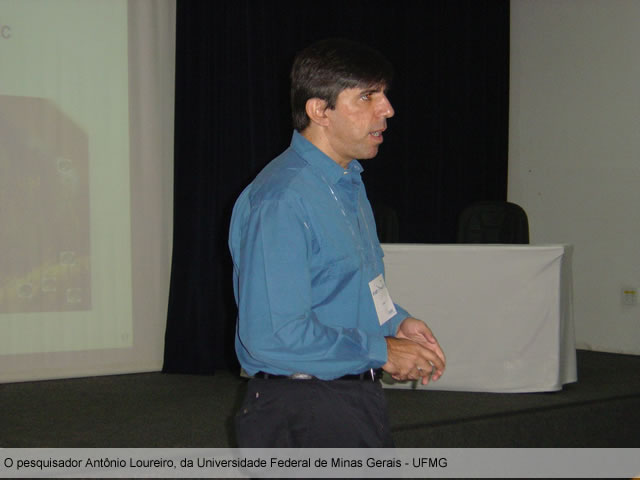
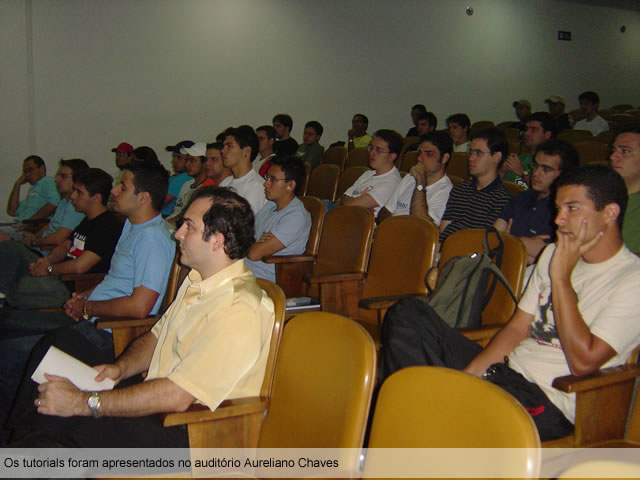
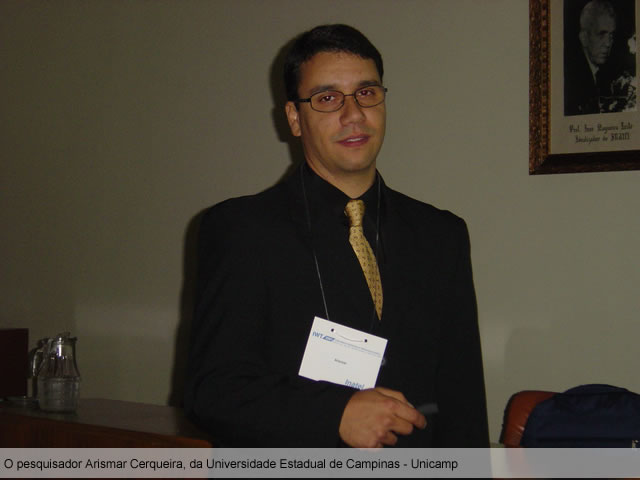
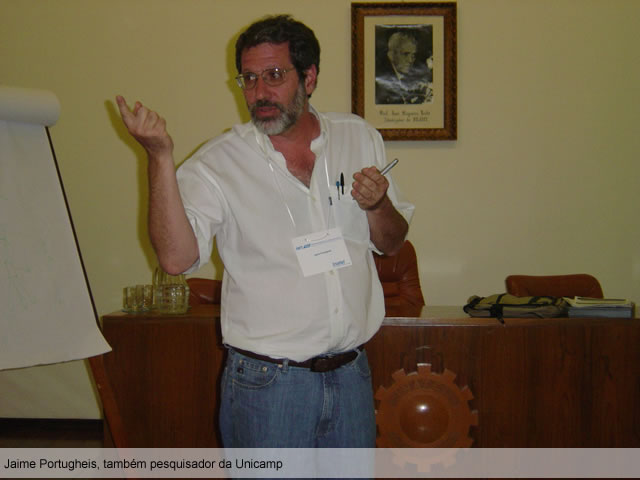

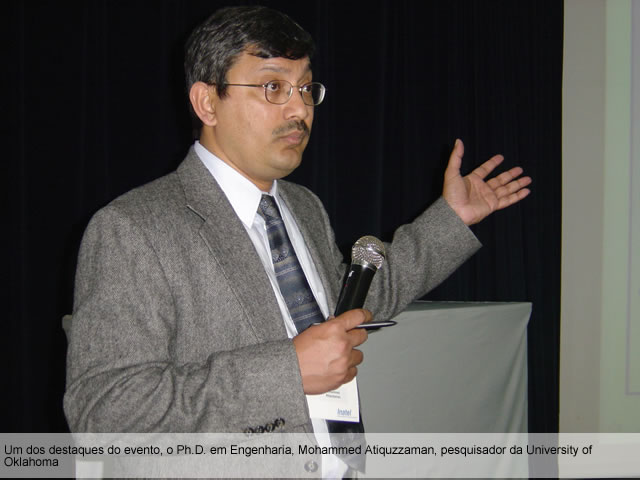
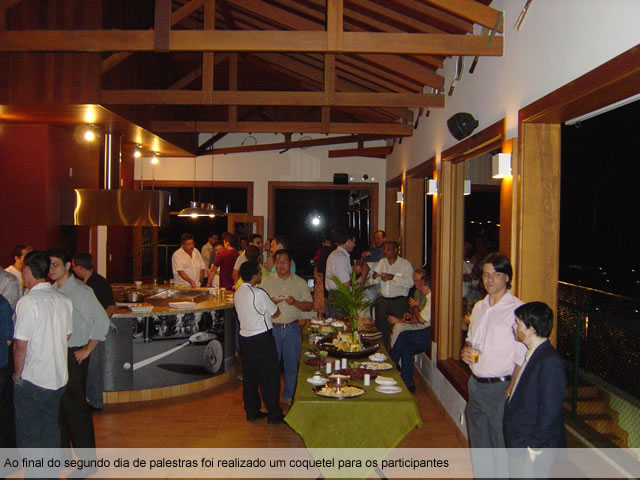

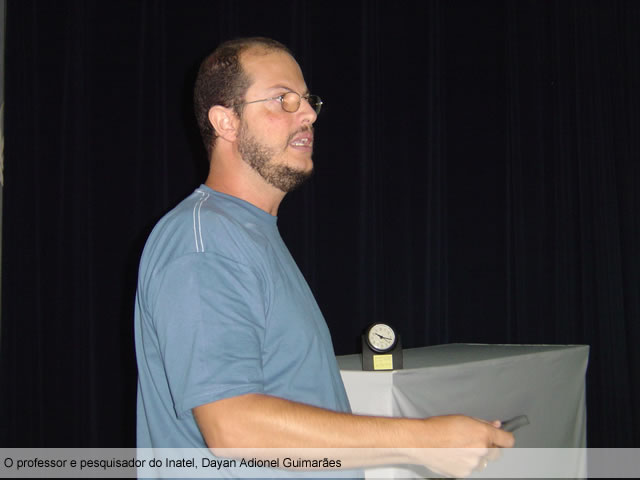
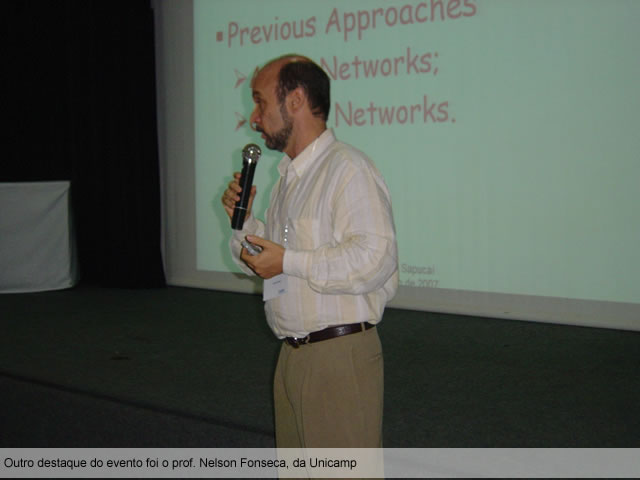
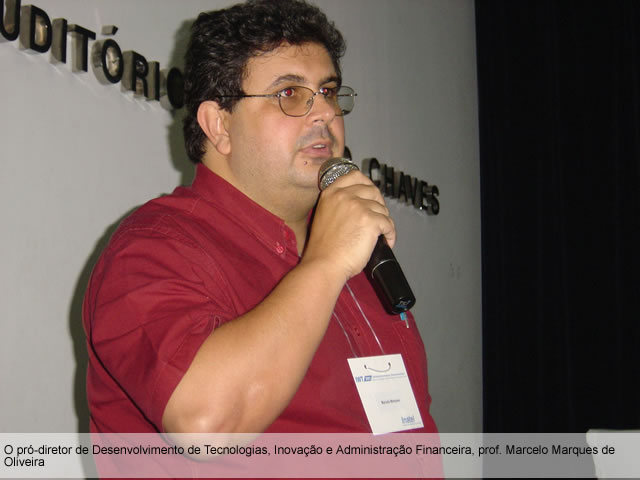

Fotos
Day 1
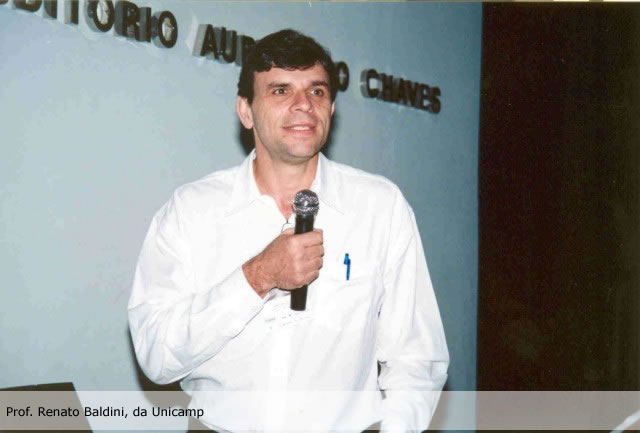

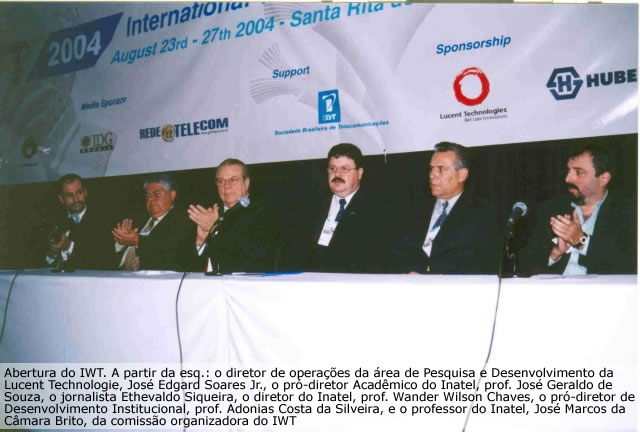
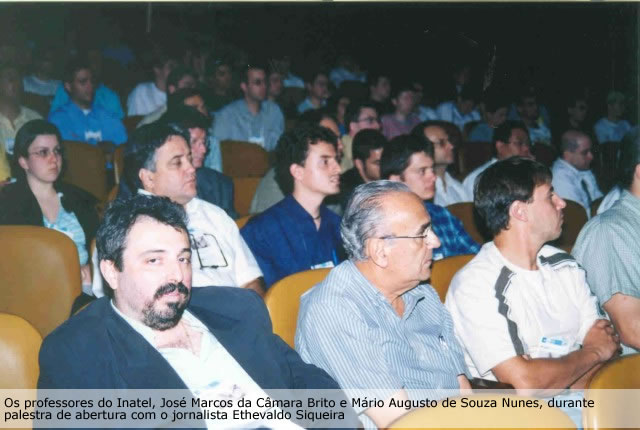
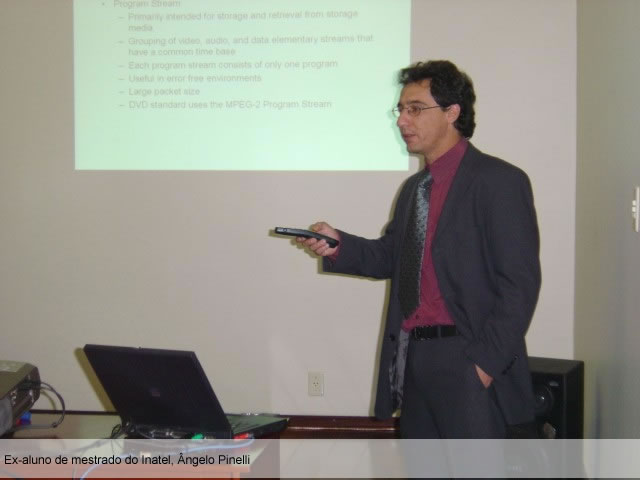
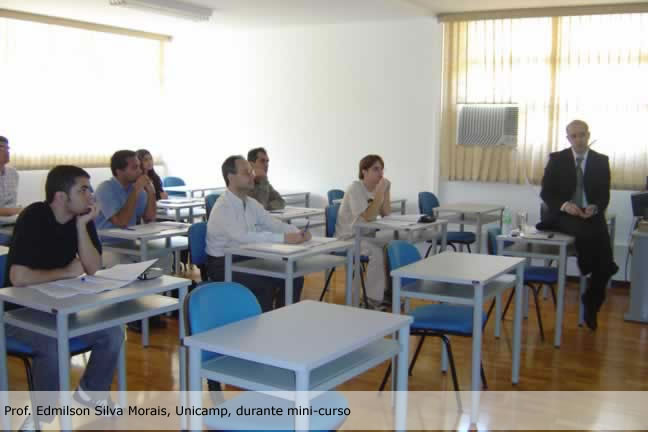
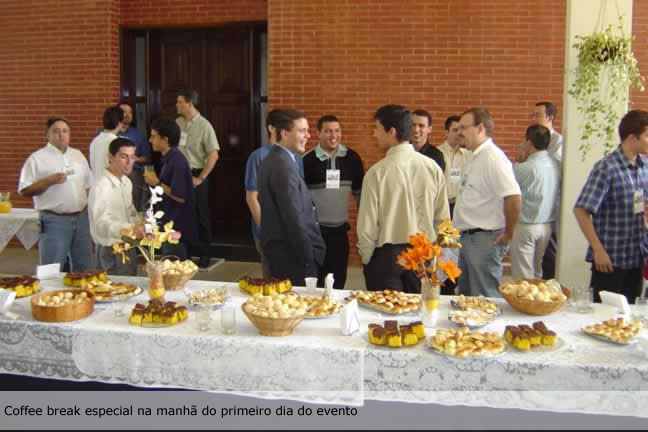
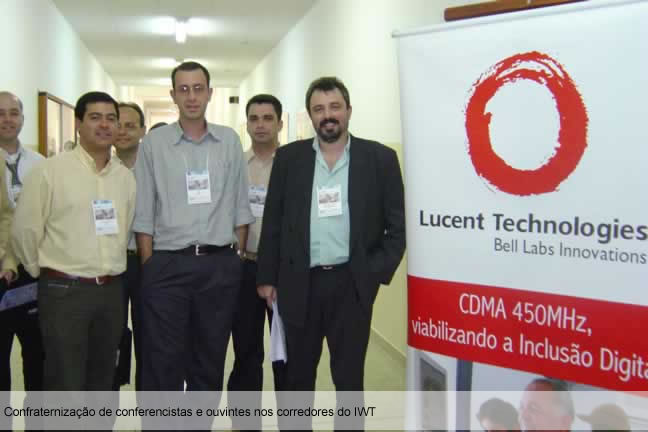

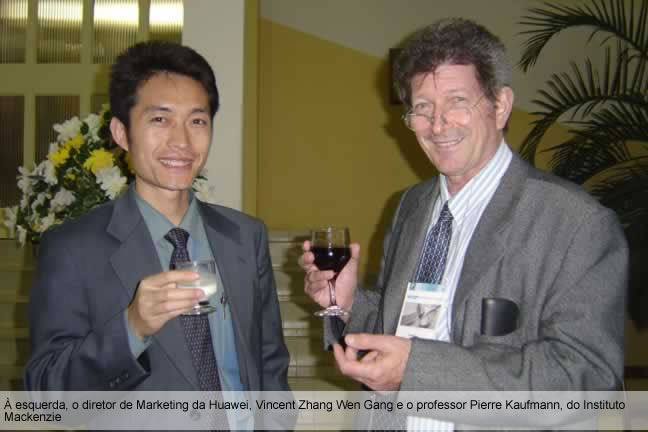
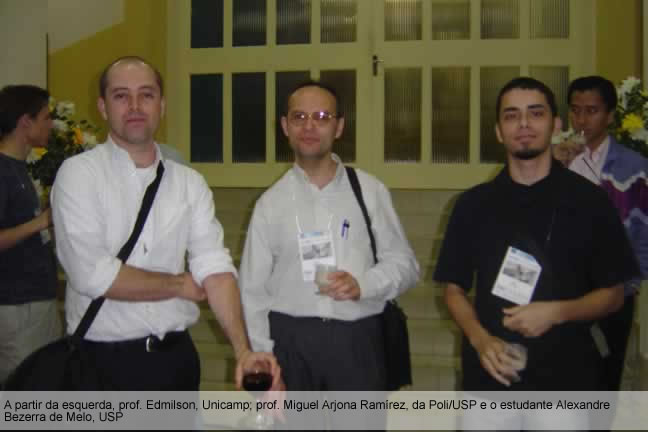
Day 2
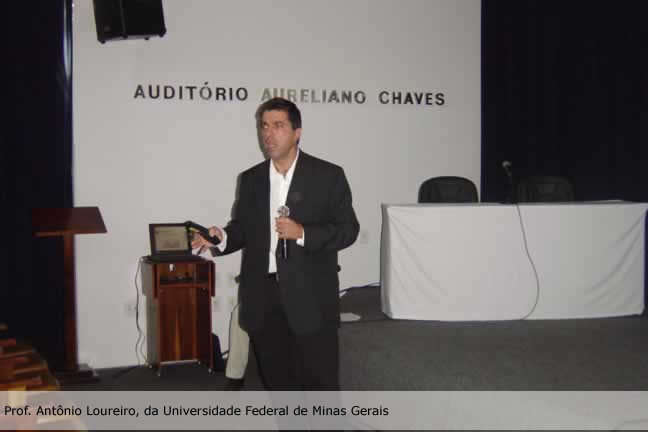
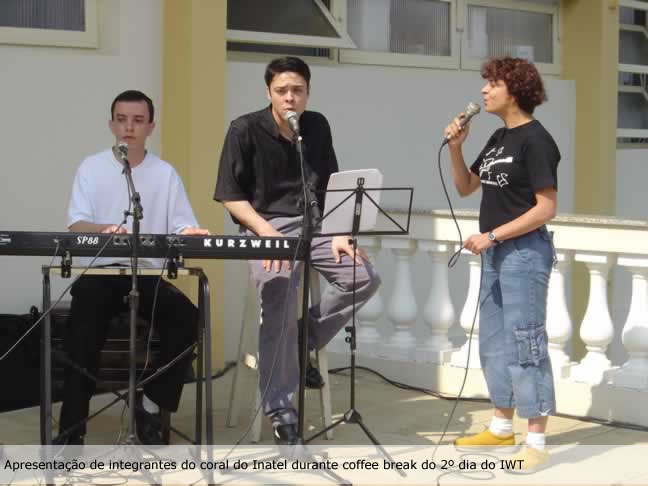
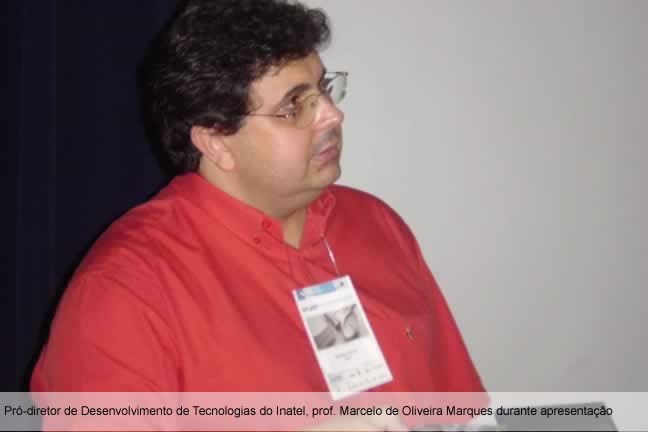
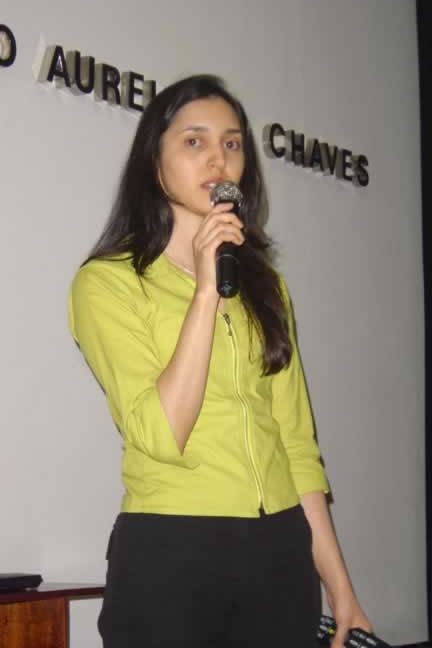
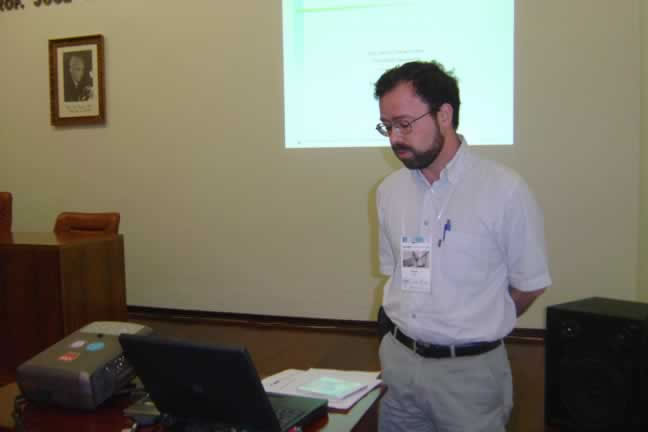
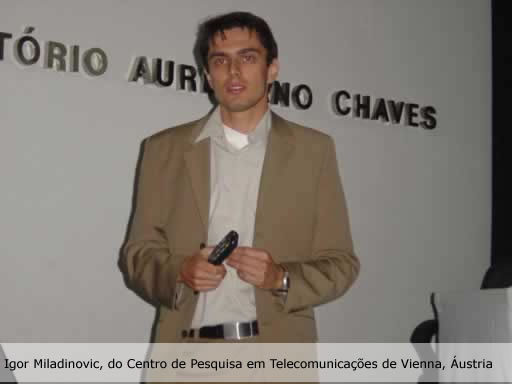
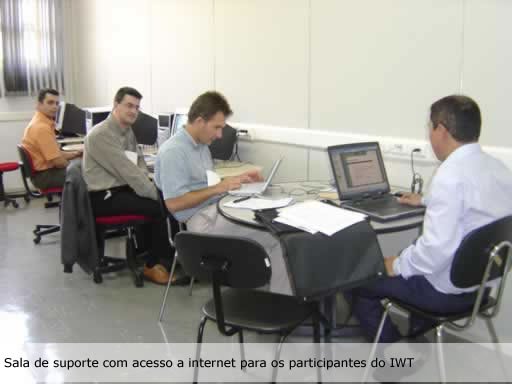
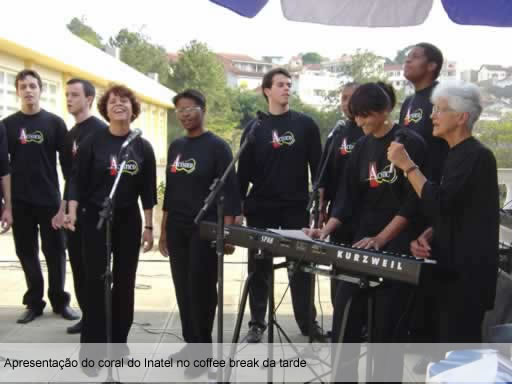

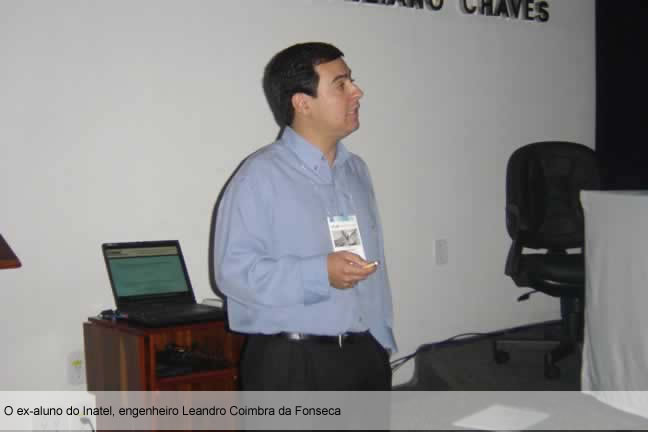
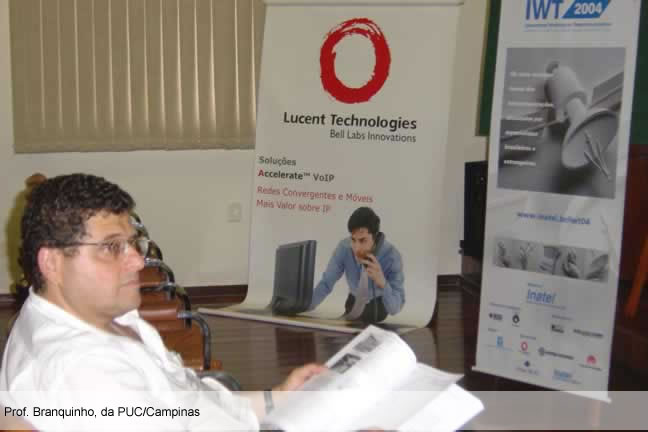
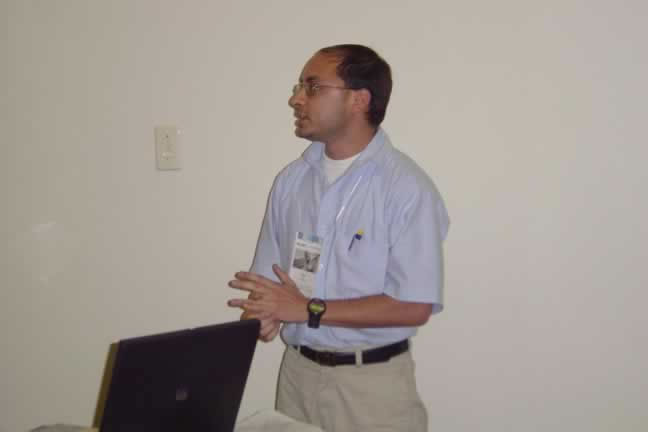
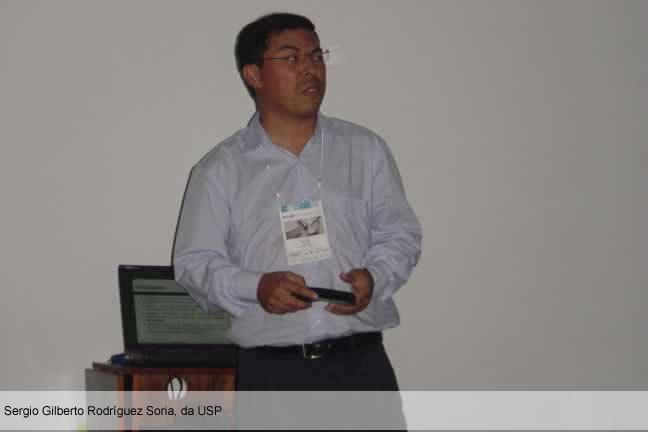
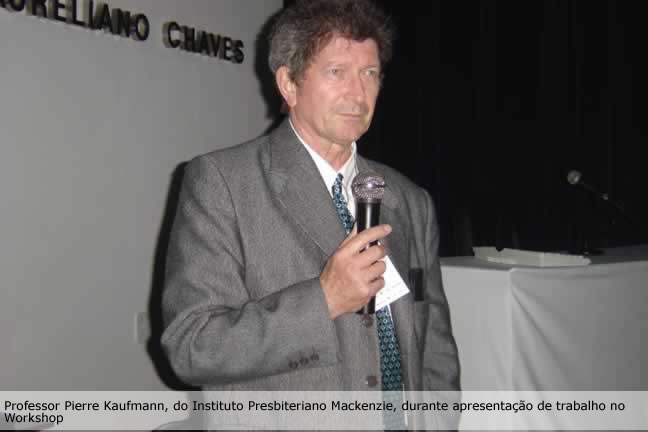
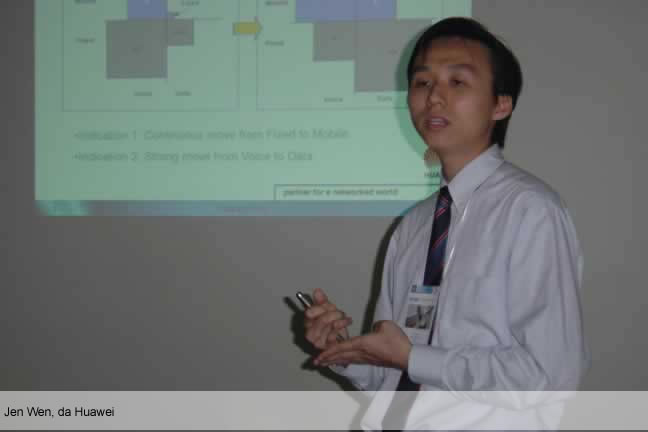
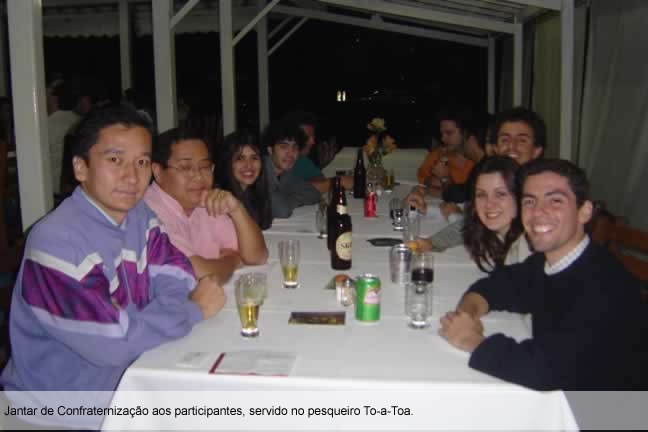
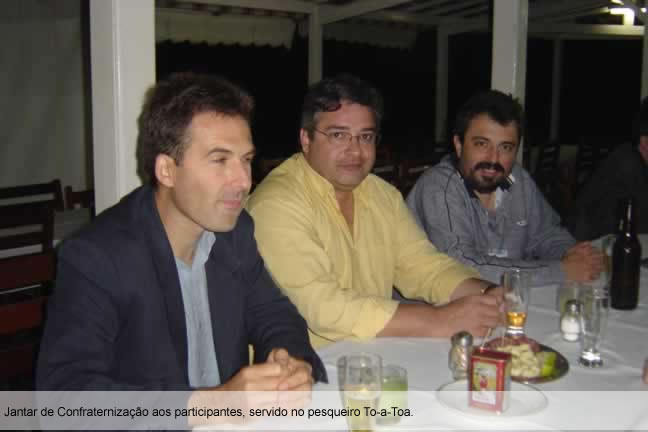
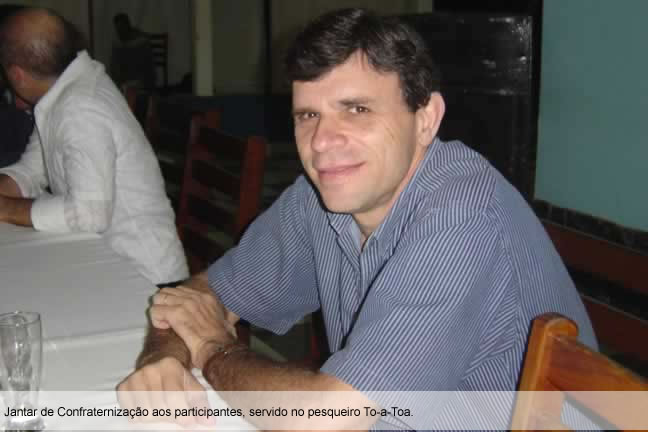
Day 3
